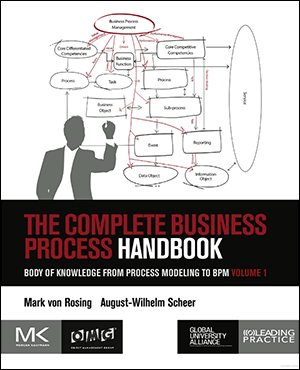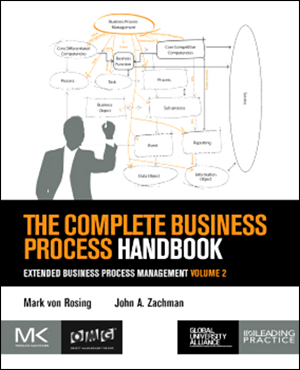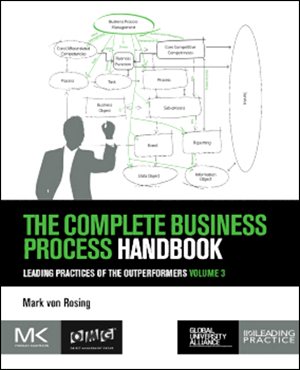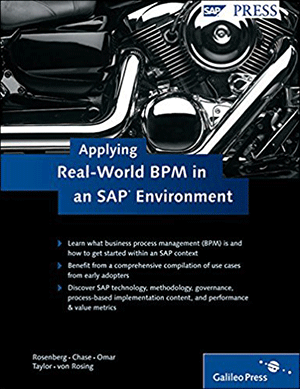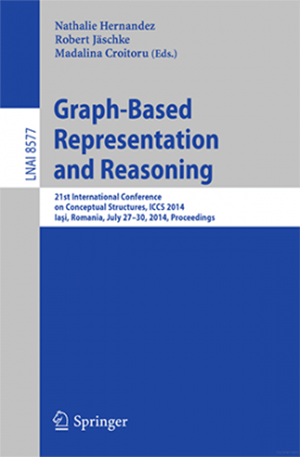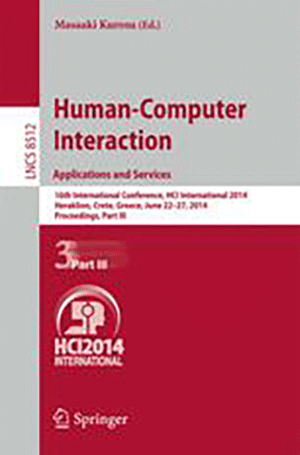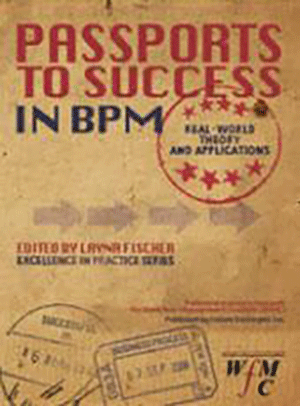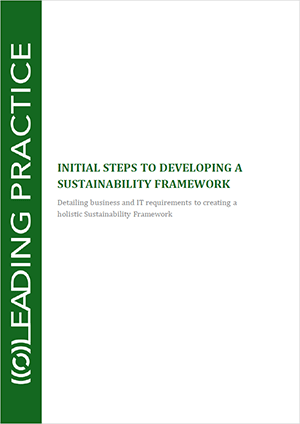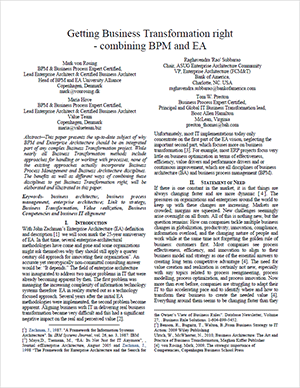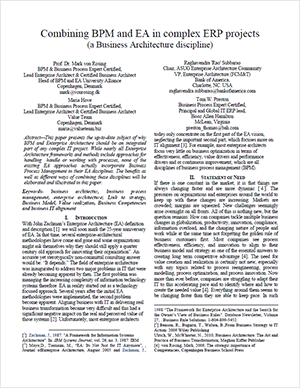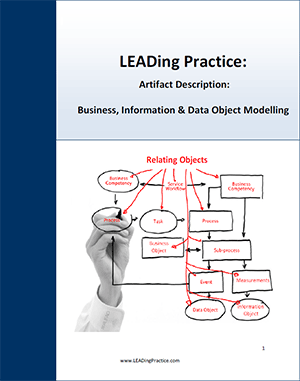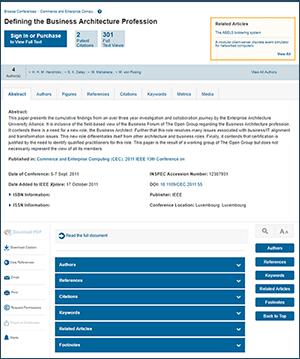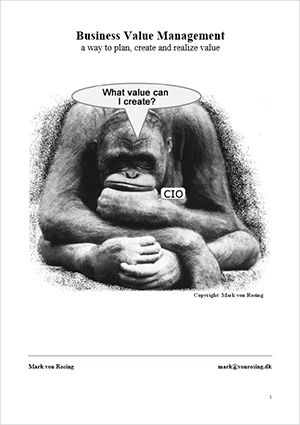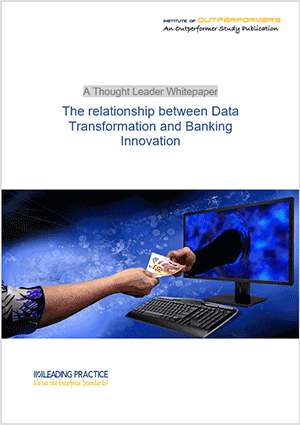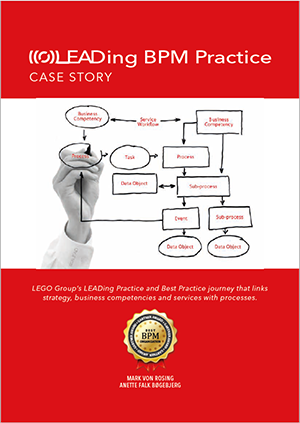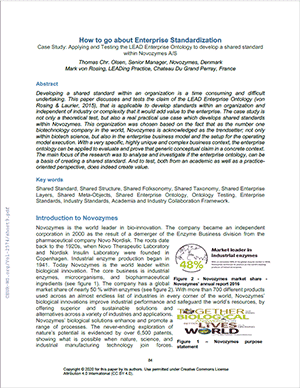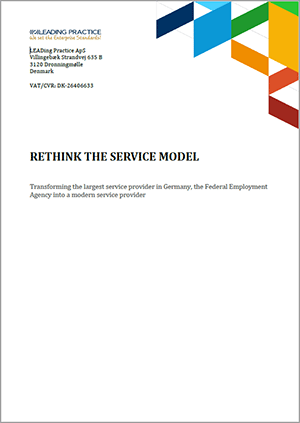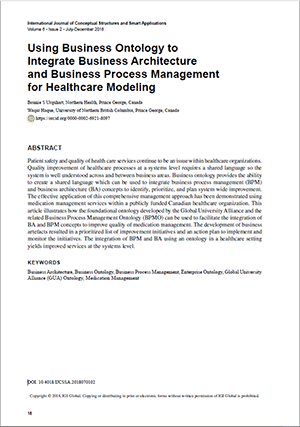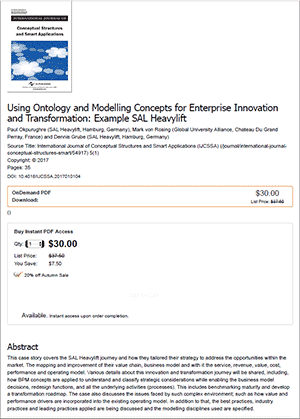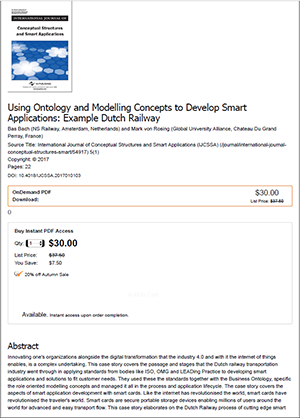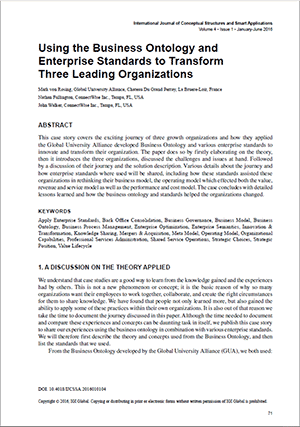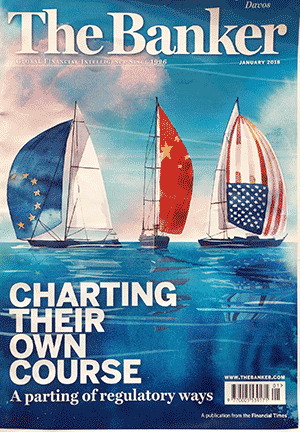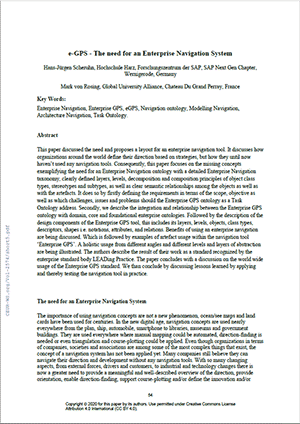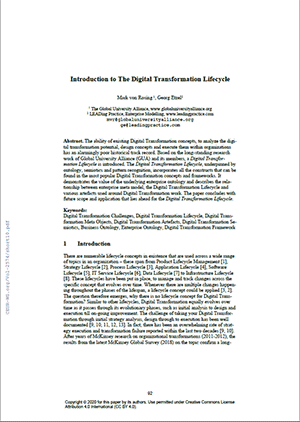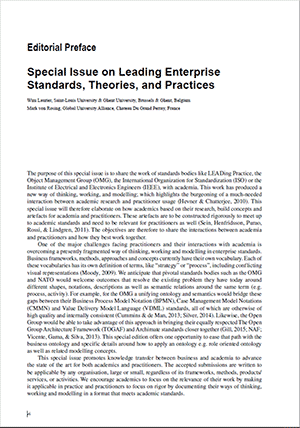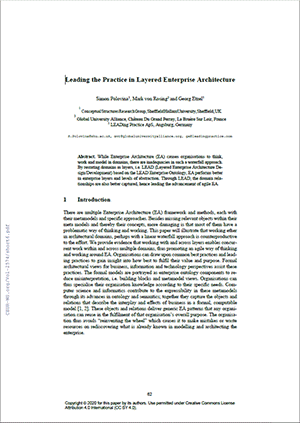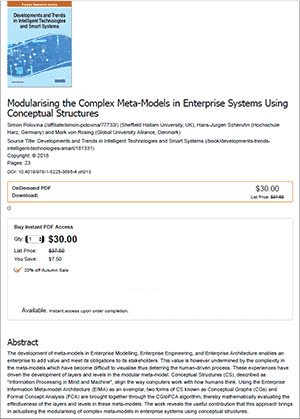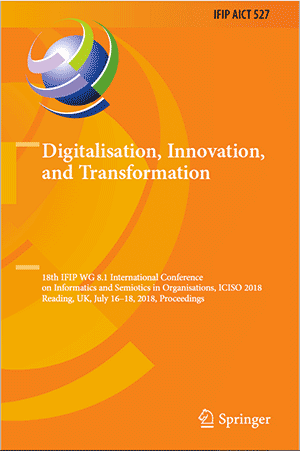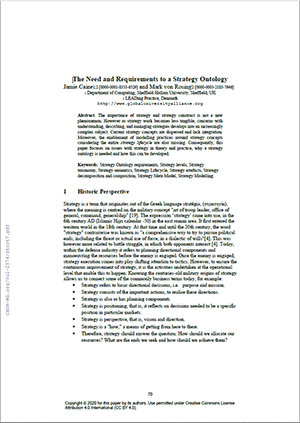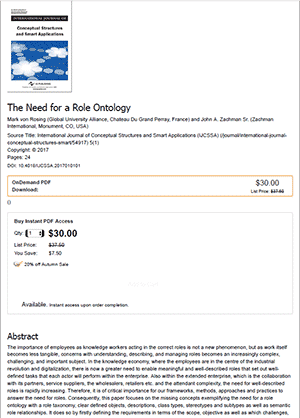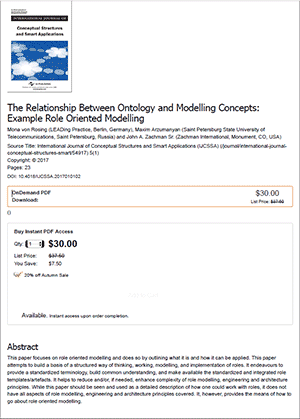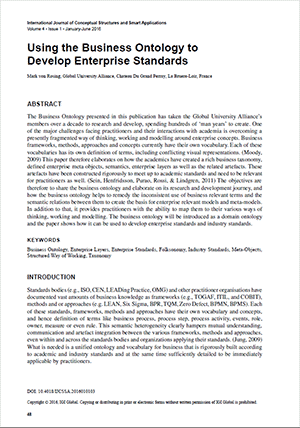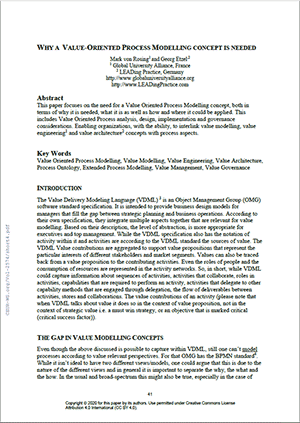Publications
We author books, articles, and research papers with global industry leaders, influential thinkers of our time, prominent academics and researchers, best-selling authors, and other seasoned practitioners of our trade; Business & IT.
Most of our publications have shaped the way how organizations think and work today, and have even laid down the foundation for Europe’s digital agenda, the Fourth Industrial Revolution (Industry 4.0), and what is being taught at universities today.
Driven by passion, we conduct applied research at the frontiers of complexity to identify new patterns and connections that raises the bar for decision makers in businesses and organizations around the world. Our goal is to simplify the complex choices that leaders face — in strategy, marketing, operations, human capital, governance, and many other domains.
Books
The Complete Business Process Handbook, Volume 1
August-Wilhelm Scheer, Mark von Rosing, et al
This is the most comprehensive body of knowledge around Business Process Modeling and Business Process Management. A practical guide for Practitioners, Managers, Executives and Students with hands-on descriptions of how to work with it.
It stands out as a masterpiece, being part of the BPM bachelor and master degree curriculum at universities around the world with revealing academic research and insight from the leaders in the market. The first volume endows the reader with a deep insight into the nature of business process and how to work with it.
The Complete Business Process Handbook, Volume 2
John A. Zachman, Mark von Rosing, et al
Volume 2 is the most comprehensive body of knowledge around Extended Business Process Management, revealing new research and gives the most comprehensive picture on contemporary Business Process Management (BPM).
A practical guide for Executives, Managers, Practitioners, Researchers and Students with hands-on descriptions of how to work with it.
Written by the authorities that have shaped the way we think and work with processes today. It stands out as a masterpiece, being part of the BPM bachelor and Master degree curriculum at universities around the world, with revealing academic research and insight from the leaders in the market.
The Complete Business Process Handbook, Volume 3
Mark von Rosing, et al
Volume 3 is the biggest collection of award winning real-life examples of leading organizations who apply leading practices to outperform in the market. Learning from the outperformers in terms of what works and what doesn’t, the book is structured as a practical guide for Executives, Managers, Practitioners, Researchers and Students with hands-on descriptions of how to the work with it.
From the executive layers that define the strategies, the critical success factors and the goals of the business, to the business managers that administer, governs, evaluate and monitor the business as well as the operational layer, responsible for the deliver an execution.
Mark von Rosing, Ann Rosenberg, Greg Chase, R. Omar, James Taylor
This book is your guide to implementing SAP concepts in all its process aspects in your business workflows, process flows, services and information flows. It explains how BPM and standard software work together, how to prepare your company for the project, and how to put technology, governance, and the philosophy behind it in action.
Extensive use cases from well-known SAP customers including technical and process details make this book a true real-world experience!
Graph-Based Representation and Reasoning
Simon Polovina, Mark von Rosing and Wim Laurier
Conceptual Structures are beginning to make an impact across industries. It’s evident in LEAD in its attempt to provide capabilities that handle ontology and semantics.
This chapter explains the existing work in LEAD and how CGs, FCA and their tools leave their mark across the industries.
Human-Computer Interaction: Applications and Services.
Fan Zhao, Hans-Jürgen Scheruhn, Mark von Rosing
To cut cost while increasing competitiveness, more and more small and medium-sized enterprises (SMEs) are considering cloud computing technology for supporting their business processes.
This study provides substantive conclusions about the transformation effects of national culture dimensions on cloud computing acceptance in organizations.
Learning from the Leaders
Mark von Rosing, Maria Hove, et al
Discover in what one can learn from leading and outperforming organizations, discussing them with others, thinking about how we would react in similar situations, we are actively learning.
Gain insight into the technique to explore patterns that are documented, the benefits are specified so that they may be repeated and so knowledge from the cases can be made a part of your skillset.
Report, Global University Alliance
Mark von Rosing
The Business of sustainability and how to put it into practice was presented at the Copenhagen Climate Change Conference – December 2009 as Initial thoughts on a Sustainability Framework.
The Business of sustainability and how to put it into practice with a detailed Sustainability Framework. Discover detailed business and IT requirements to creating a holistic Sustainability Framework.
Article, Global University Alliance
Raghavendra Subbarao, Mark von Rosing, Maria Hove, Tom W. Preston
This paper presents the up-to-date subject of why BPM and Enterprise Architecture should be an integrated part of any complex Business Transformation project.
Article, Global University Alliance
Raghavendra Subbarao, Mark von Rosing, Maria Hove, Tom W. Preston
This paper presents the up-to-date subject of why BPM and Enterprise Architecture should be an integrated part of any complex IT project. While nearly all Enterprise Architecture frameworks and methods include approaches for handling handle or working with processes, none of the existing EA approaches actually incorporate Business Process Management in their EA disciplines.
The benefits as well as different ways of combining these disciplines will be elaborated and illustrated in this paper.
Work Product Report, LEADing Practice
Mark von Rosing, Georg Etzel, Ulrik Foldager
This paper describes what business, information and data objects are in terms of LEAD context, and displays methods of how to work effectively with these objects using a structure for a Way of Thinking, Way of Working and Way of Modelling.
Article, IEEE Publishing
Harry Hendrickx, Kevin Daley, Mieke Mahakena, Mark von Rosing
This paper presents the cumulative findings from an over three-year investigation and collaboration journey by the Enterprise Architecture University Alliance.
It is inclusive of the field-based view of the Business Forum of The Open Group regarding the Business Architecture profession.
Article, Copenhagen Business School
Mark von Rosing
An interesting fact about companies is that they spend most of their time trying to realize value. That in itself is quite understandable, but it is a fatal misconception not recognize the fact that there is a direct link between value planning, value creation and the subsequent implementation thereof.
Value Modelling is one of the most common dilemmas and challenges confronting companies today, regardless of factors such as size, revenue, industry, region or business model.
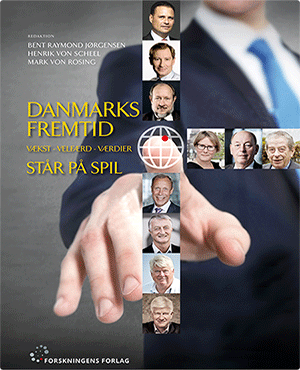
Danmarks Fremtid (danish book)
Bent Raymond Jørgensen, Mark von Rosing, et al
Danmarks fremtrædende erhvervsfolk, vismænd og forskere er samlet for at give et unikt syn på hvordan Danmarks fremtid tegner sig.
Danmark står midt i store forandringer. Som samfund er det ikke noget, vi lukker øjnene for. Vi konstaterer, at det sker, og vi ser og diskuterer hver eneste dag effekten af forandringerne. Vi erkender ikke til fulde, hvad der foregår, mens vi står midt i det hele.
Bogen tager udgangspunkt i faktuelle virkeligheder og nytænkning i forhold til balancen mellem velfærd, vækst og værdier ud fra akademiske, erhvervsmæssige, økonomiske og samfundsmæssige perspektiver.
Industry Cases
A Thought Leader Whitepaper, Institute of Outperformers
Gregory Robinson, Martina Weigl, Prof. Mark von Rosing, Dr. Peter Hönigschmid, Ken Teske and Christian Strauer
In this thought leader whitepaper, we discuss banking’s need to rethink their data and information concepts. We discuss the value of learning from banking leaders/outperformers and experiences brought in from other industries. We provide actionable suggestions that can be considered in the digital transformation journey of banks. This whitepaper inspires and supports you in your journey.
Case Story, Global University Alliance
Anette Falk Bøgebjerg, Mark von Rosing, et al
LEGO Group’s LEADing Practice and Best Practice journey that links strategy, business competencies and services with processes.
The case story was recognized with the prestigious BPM Gartner Group Award Winner on LEADing Practices and Advanced Process Modelling.
Case Study: Applying and Testing the LEAD Enterprise Ontology to develop a shared standard within Novozymes A/S
Thomas Chr. Olsen, Senior Manager, Novozymes, Denmark
Mark von Rosing, LEADing Practice, Chateau Du Grand Perray, France
Developing a shared standard within an organization is a time consuming and difficult undertaking. This paper discusses and tests the claim of the LEAD Enterprise Ontology (von Rosing & Laurier, 2015), that is applicable to develop standards within an organization and independent of industry or complexity that it would add value to the enterprise.
The case study is not only a theoretical test, but also a real practical use case which develops shared standards within Novozymes.
Case Study: Rethink the Service Model
Thomas Boosz, Volker Rebhan, Karsten Bunk, Klaus Vitt, Prof. Mark von Rosing, Georg Etzel, Ulrik Foldager
This case study was written together with representatives of the German Government, Federal Employment Agency and LEADing Practice. The information shared does not represent the official meaning of the organisation, but shares the journey undertaken. It is done with the purpose, to share knowledge of how to go about Government Service Renewal, Digital Transformation as well as Standardisation.
Case Study
Bonnie S Urquhart, Northern Health, Prince George, Canada
Waqar Haque, University of Northern British Columbia, Prince George, Canada
Patient safety and quality of health care services continue to be an issue within healthcare organizations.
Quality improvement of healthcare processes at a systems level requires a shared language so the system is well understood across and between business areas. Business ontology provides the ability to create a shared language which can be used to integrate business process management (BPM) and business architecture (BA) concepts to identify, prioritize, and plan system wide improvement.
The effective application of this comprehensive management approach has been demonstrated using medication management services within a publicly funded Canadian healthcare organization.
Case Study
Paul Okpurughre (SAL Heavylift, Hamburg, Germany), Mark von Rosing (Global University Alliance, Chateau Du Grand Perray, France) and Dennis Grube (SAL Heavylift, Hamburg, Germany)
This case story covers the SAL Heavylift journey and how they tailored their strategy to address the opportunities within the market. The mapping and improvement of their value chain, business model and with it the service, revenue, value, cost, performance and operating model.
Various details about this innovation and transformation journey will be shared, including, how BPM concepts are applied to understand and classify strategic considerations while enabling the business model decisions, redesign functions, and all the underlying activities (processes). This includes benchmarking maturity and develop a transformation roadmap.
Case Study
Bas Bach (NS Railway, Amsterdam, Netherlands) and Mark von Rosing (Global University Alliance, Chateau Du Grand Perray, France)
Innovating one’s organizations alongside the digital transformation that the industry 4.0 and with it the internet of things enables, is a complex undertaking. This case story covers the passage and stages that the Dutch railway transportation industry went through in applying standards from bodies like ISO, OMG and LEADing Practice to developing smart applications and solutions to fit customer needs.
They used these the standards together with the Business Ontology, specific the role oriented modelling concepts and managed it all in the process and application lifecycle.
Case Study
Mark von Rosing, Global University Alliance, Chateau Du Grand Perray, La Bruere-Loir, France
Nathan Fullington, ConnectWise Inc., Tampa, FL, USA
John Walker, ConnectWise Inc., Tampa, FL, USA
This case story covers the exciting journey of three growth organizations and how they applied the Global University Alliance developed Business Ontology and various enterprise standards to innovate and transform their organization.
The paper does so by firstly elaborating on the theory, then it introduces the three organizations, discussed the challenges and issues at hand. Followed by a discussion of their journey and the solution description.
Case Study
Mark von Rosing, Global University Alliance, Chateau Du Grand Perray, France
The new industrial revolution and digital transformation, which will enable smart thinking, working and automation across multiple industries, are changing the nature of trade, both digital as well as physical, writes the founder of enterprise standards body LEADing Practice.
Academic Research Papers
Research Paper
Hans-Jürgen Scheruhn, Hochschule Harz, Forschungszentrum der SAP, SAP Next Gen Chapter, Wernigerode, Germany
Mark von Rosing, Global University Alliance, Chateau Du Grand Perray, France
This paper discussed the need and proposes a layout for an enterprise navigation tool. It discusses how organizations around the world define their direction based on strategies, but how they until now haven’t used any navigation tools.
Consequently, this paper focuses on the missing concepts exemplifying the need for an Enterprise Navigation ontology with a detailed Enterprise Navigation taxonomy, clearly defined layers, levels, decomposition and composition principles of object class types, stereotypes and subtypes, as well as clear semantic relationships among the objects as well as with the artefacts.
Research Paper
Mark von Rosing, Global University Alliance, Chateau Du Grand Perray, France
Georg Etzel, LEADing Practice ApS, Augsburg, Germany
The ability of existing Digital Transformation concepts, to analyze the digital transformation potential, design concepts and execute them within organizations has an alarmingly poor historical track record.
Based on the long-standing research work of the Global University Alliance (GUA) and its members, a Digital Transformation Lifecycle is introduced. The Digital Transformation Lifecycle, underpinned by ontology, semiotics and pattern recognition, incorporates all the constructs that can be found in the most popular Digital Transformation concepts and frameworks.
Research Paper, Special Issue
Wim Laurier, Saint-Louis University & Ghent University, Brussels & Ghent, Belgium
Mark von Rosing, Global University Alliance, Chateau Du Grand Perray, France
The purpose of this special issue is to share the work of standards bodies like LEADing Practice, the Object Management Group (OMG), the International Organization for Standardization (ISO) or the Institute of Electrical and Electronics Engineers (IEEE), with academia.
This work has produced a new way of thinking, working, and modelling; which highlights the burgeoning of a much-needed interaction between academic research and practitioner usage (Hevner & Chatterjee, 2010). This special issue will therefore elaborate on how academics based on their research, build concepts and artefacts for academia and practitioners.
Research Paper
Simon Polovina, Conceptual Structures Research Group, Sheffield Hallam University, Sheffield, UK
Mark von Rosing, Global University Alliance, Chateau Du Grand Perray, France
Georg Etzel, LEADing Practice ApS, Augsburg, Germany
While Enterprise Architecture (EA) causes organisations to think, work and model in domains, there are inadequacies in such a waterfall approach.
By restating domains as layers, i.e. LEAD (Layered Enterprise Architecture Design/Development) based on the LEAD Enterprise Ontology, EA performs better in enterprise layers and levels of abstraction. Through LEAD, the domain relationships are also better captured, hence leading the advancement of agile EA.
Research Paper
Simon Polovina, Conceptual Structures Research Group, Sheffield Hallam University, Sheffield, UK
Hans-Jürgen Scheruhn, Hochschule Harz, Germany
Mark von Rosing, Global University Alliance, Chateau Du Grand Perray, France
The development of meta-models in Enterprise Modelling, Enterprise Engineering, and Enterprise Architecture enables an enterprise to add value and meet its obligations to its stakeholders.
This value is however undermined by the complexity in the meta-models which have become difficult to visualise thus deterring the human-driven process. These experiences have driven the development of layers and levels in the modular meta-model. Conceptual Structures (CS), described as “Information Processing in Mind and Machine”, align the way computers work with how humans think.
Research Paper
Jamie Caine, Department of Computing, Sheffield Hallam University, Sheffield, UK
Mark von Rosing, Global University Alliance, Chateau Du Grand Perray, France
The ability of existing strategy concepts to analyse strategy, design strategy and execute strategy within organisations has an alarmingly poor historical track record.
Based on the long-standing semiotics and ontology research work of the Global University Alliance (GUA) and its members, a Strategy Lifecycle is introduced. The Strategy Lifecycle, underpinned by ontology and semiotics incorporates all the constructs that can be found in the most popular strategy concepts and frameworks.
Research Paper
Jamie Caine, Department of Computing, Sheffield Hallam University, Sheffield, UK
Mark von Rosing, Global University Alliance, Chateau Du Grand Perray, France
The importance of strategy and strategy construct is not a new phenomenon. However as strategy work becomes less tangible, concerns with understanding, describing, and managing strategies develops into an increasingly complex subject. Current strategy concepts are dispersed and lack integration.
Moreover, the enablement of modelling practices around strategy concepts considering the entire strategy lifecycle are also missing. Consequently, this paper focuses on issues with strategy in theory and practice, why a strategy ontology is needed and how this can be developed.
Research Paper
Mark von Rosing, Global University Alliance, Chateau Du Grand Perray, France
John A. Zachman Sr., Zachman International, Monument, CO, USA
The importance of employees as knowledge workers acting in the correct roles is not a new phenomenon, but as work itself becomes less tangible, concerns with understanding, describing, and managing roles becomes an increasingly complex, challenging, and important subject.
In the knowledge economy, where the employees are in the centre of the industrial revolution and digitalization, there is now a greater need to enable meaningful and well-described roles that set out welldefined tasks that each actor will perform within the enterprise.
Research Paper
Mona von Rosing, LEADing Practice, Berlin, Germany
Maxim Arzumanyan, State University of Telecommunications, Saint Petersburg, Russia
John A. Zachman Sr., Zachman International, Monument, CO, USA
This paper focuses on role oriented modelling and does so by outlining what it is and how it can be applied. This paper attempts to build a basis of a structured way of thinking, working, modelling, and implementation of roles.
It endeavours to provide a standardized terminology, build common understanding, and make available the standardized and integrated role templates/artefacts. It helps to reduce and/or, if needed, enhance complexity of role modelling, engineering and architecture principles.
Research Paper
Mark von Rosing, Global University Alliance, Chateau Du Grand Perray, France
The Business Ontology presented in this publication has taken the Global University Alliance’s members over a decade to research and develop, spending hundreds of ‘man years’ to create.
One of the major challenges facing practitioners and their interactions with academia is overcoming a presently fragmented way of thinking, working and modelling around enterprise concepts. Business frameworks, methods, approaches and concepts currently have their own vocabulary.
Each of these vocabularies has its own definition of terms, including conflicting visual representations. (Moody, 2009). This paper therefore elaborates on how the academics have created a rich business taxonomy, defined enterprise meta objects, semantics, enterprise layers as well as the related artefacts.
Research Paper
Mark von Rosing, Global University Alliance, Chateau Du Grand Perray, France
Georg Etzel, LEADing Practice ApS, Augsburg, Germany
The Business Ontology presented in this publication has taken the Global University Alliance’s members over a decade to research and develop, spending hundreds of ‘man years’ to create.
One of the major challenges facing practitioners and their interactions with academia is overcoming a presently fragmented way of thinking, working and modelling around enterprise concepts. Business frameworks, methods, approaches and concepts currently have their own vocabulary.
Each of these vocabularies has its own definition of terms, including conflicting visual representations. (Moody, 2009). This paper therefore elaborates on how the academics have created a rich business taxonomy, defined enterprise meta objects, semantics, enterprise layers as well as the related artefacts.
